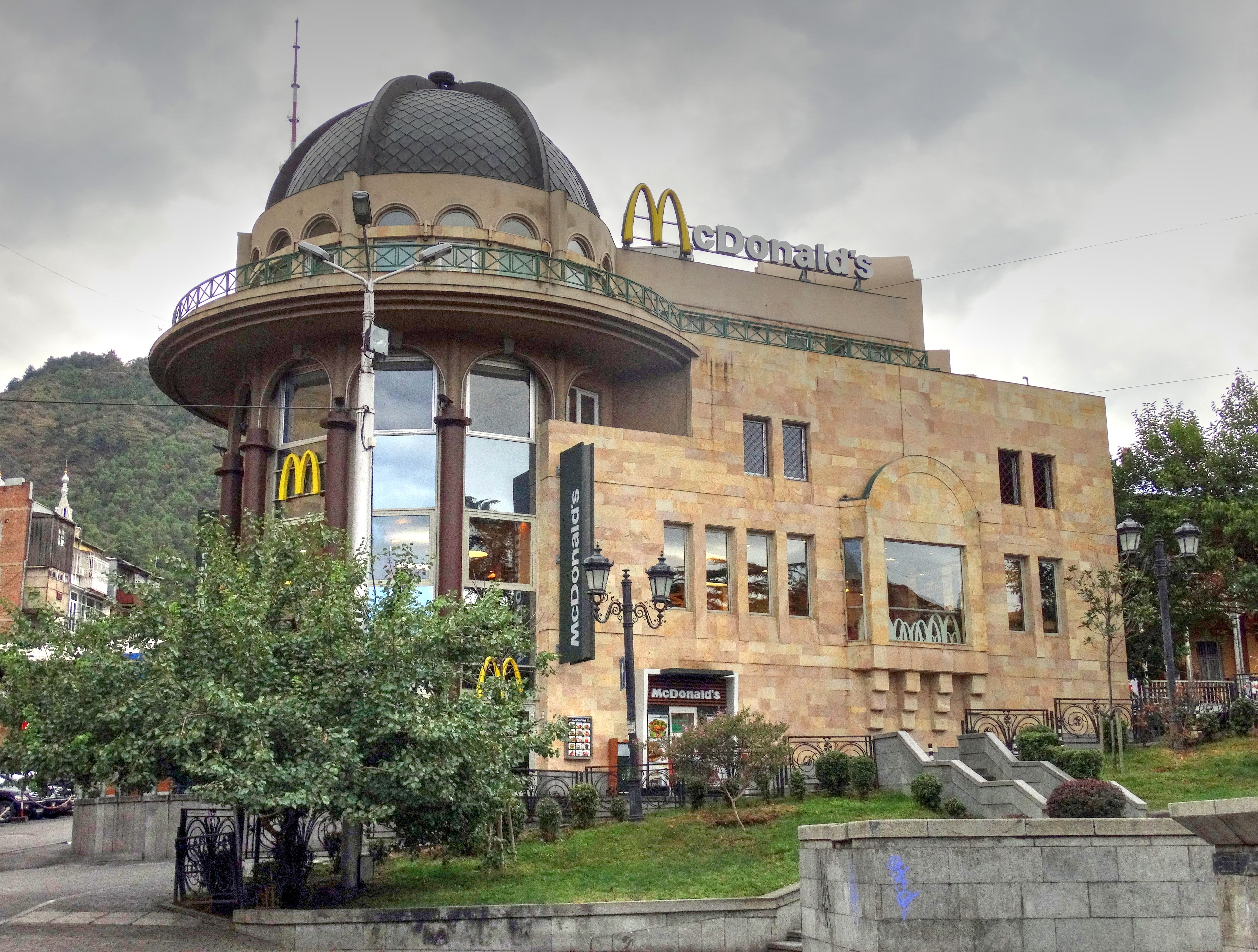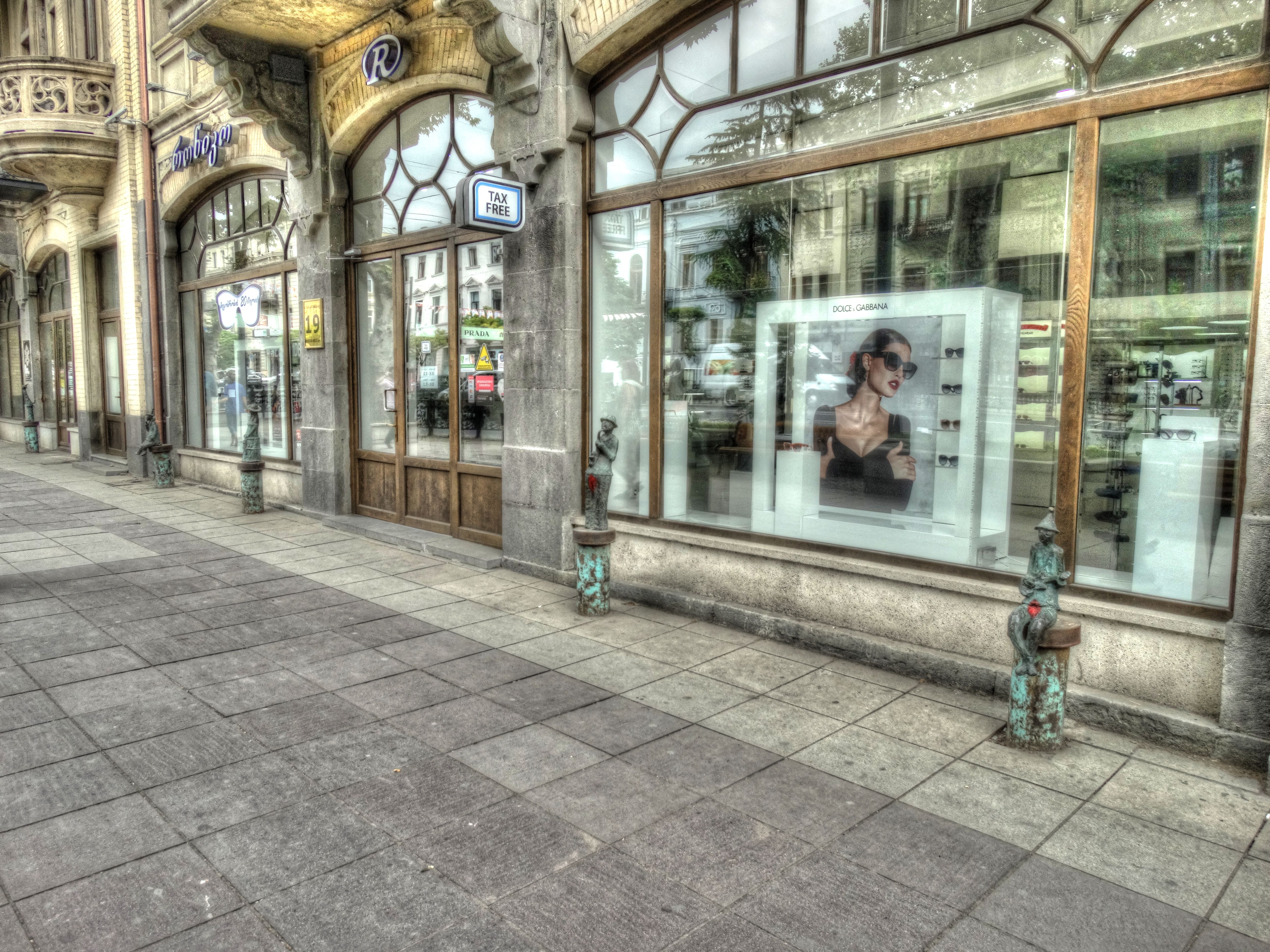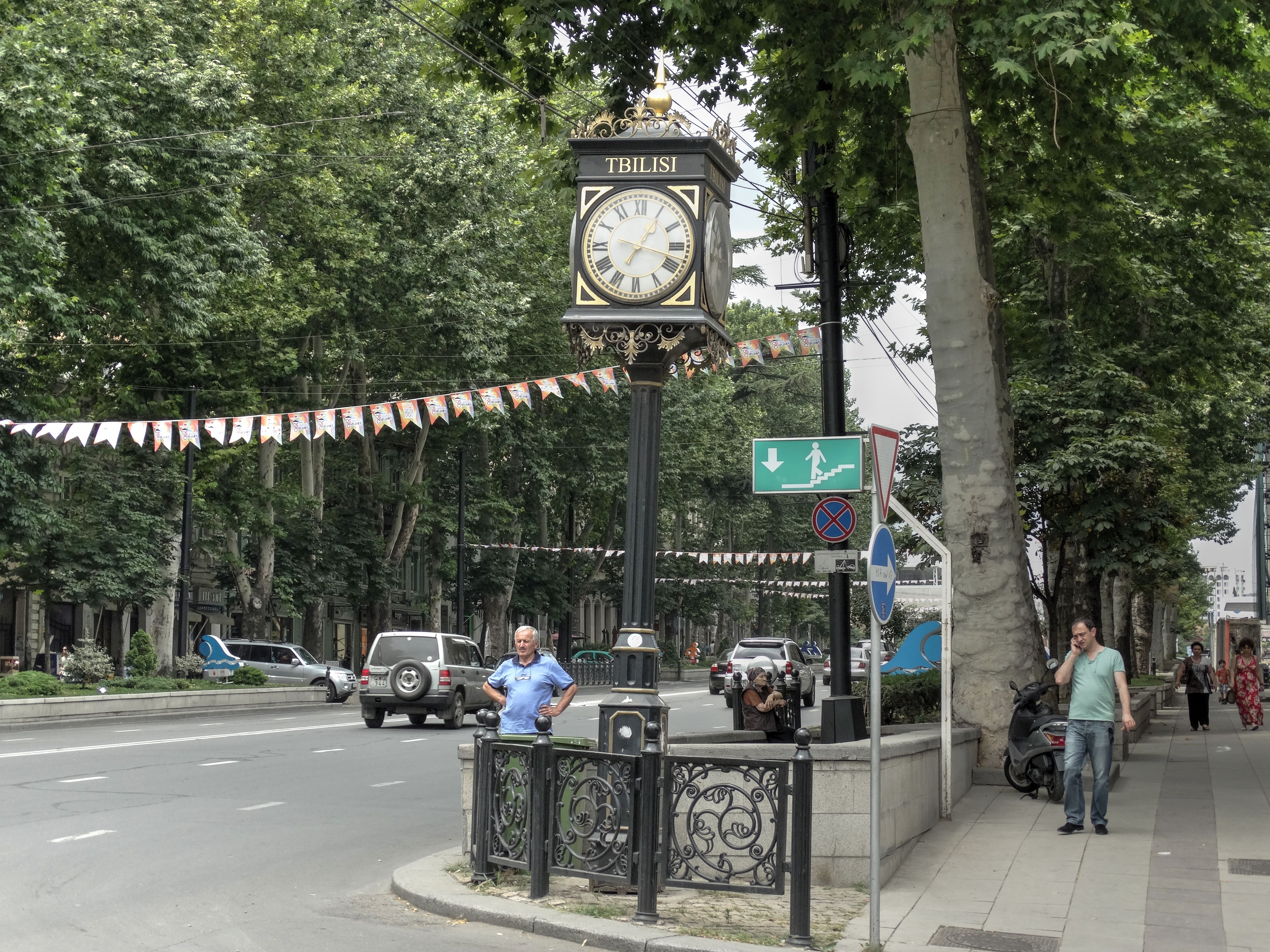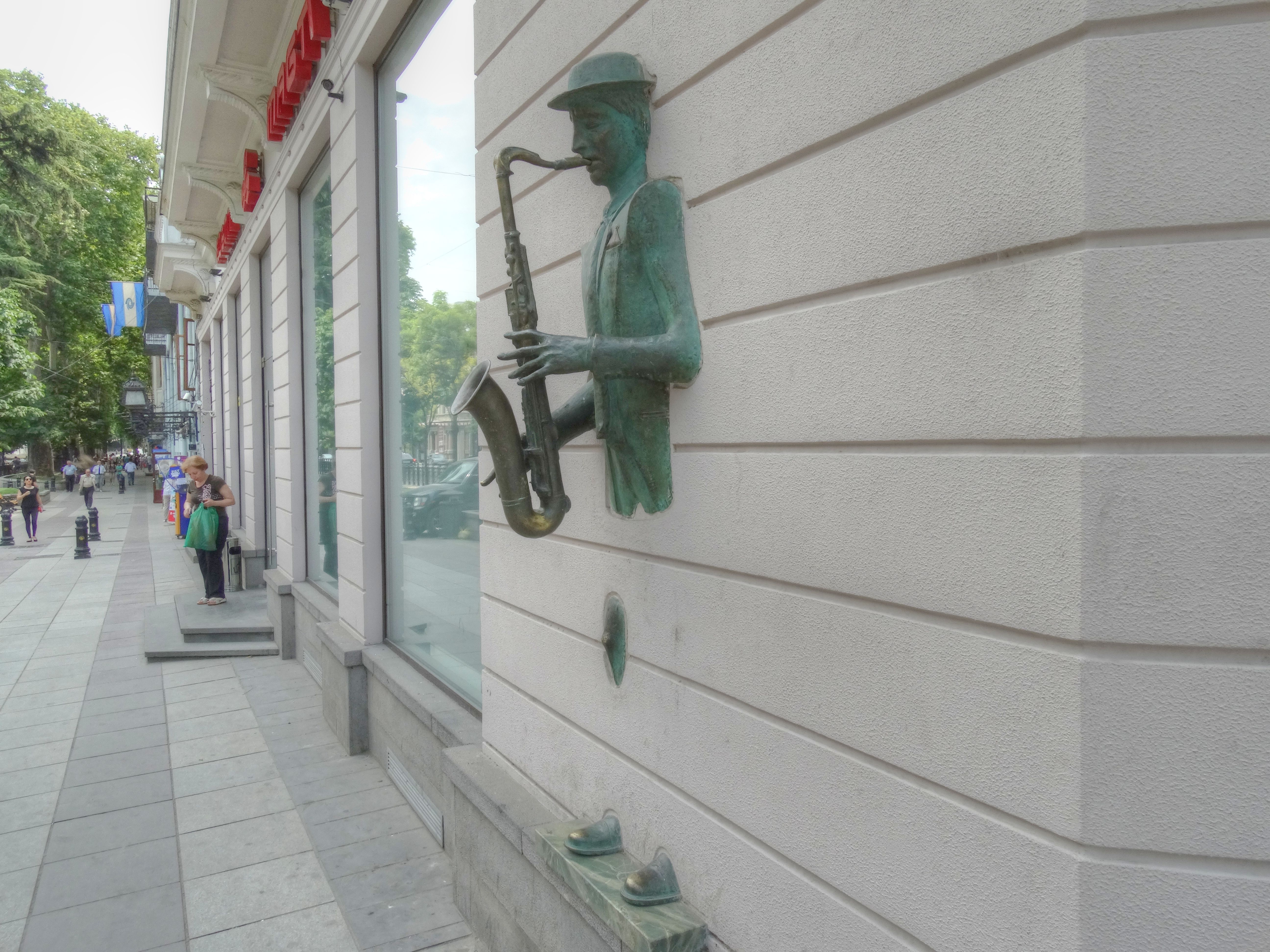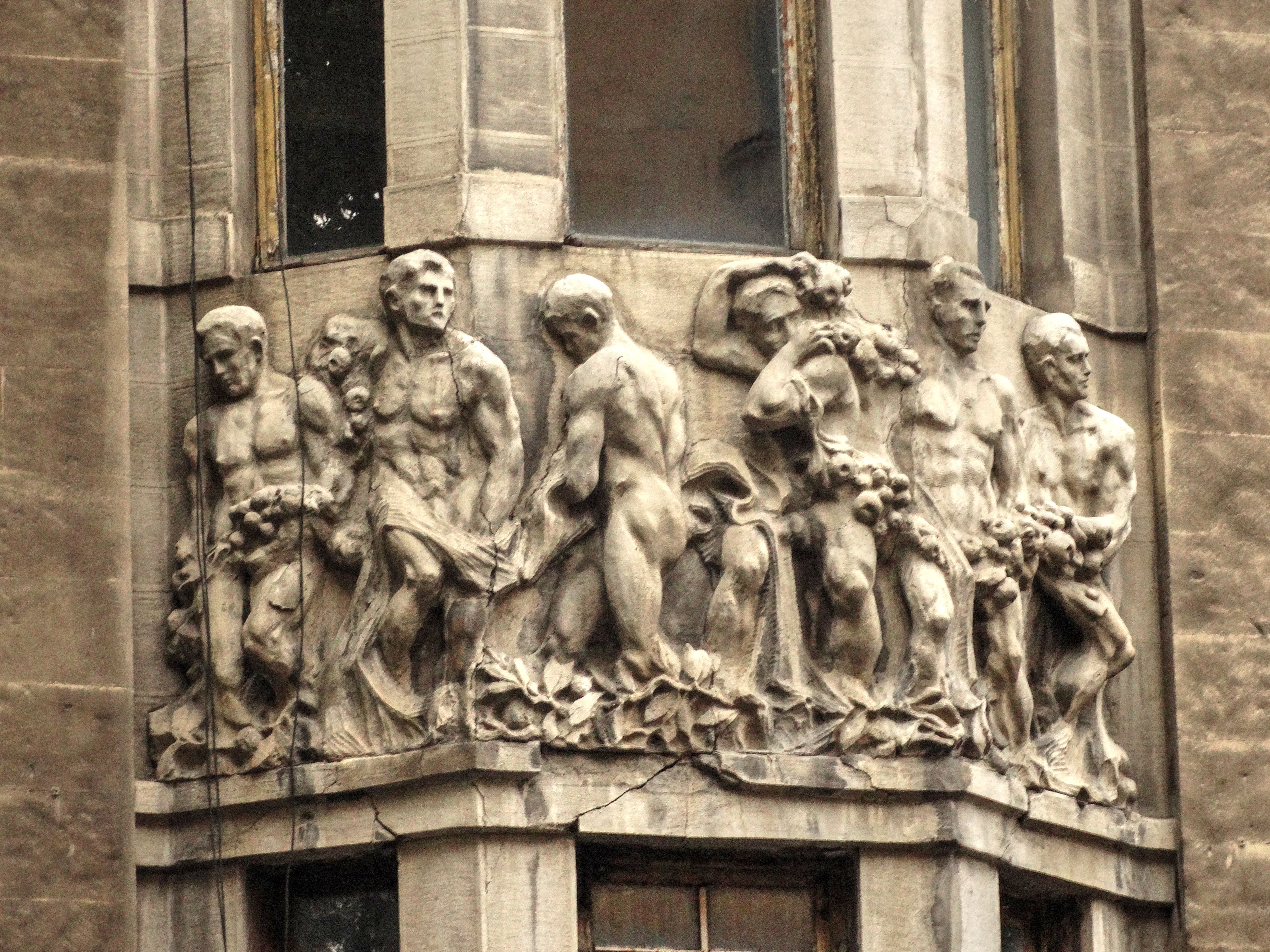We'll start the sightseeing from the capital city - Tbilisi. The city, located at the banks of the Kura River (Mtkvari) is populated by more than 1 million people, and its story dates back till, at least, 4th century - at that time was drawn the oldest map, where Tbilisi is shown. The history of the region was complicated, and so was the history of the city - it had been invaded by Arabs, Persians, Tartars, Mongols, Russians... But even after the most bloody wars it has been revived. Today it's a fascinating mix of the past and the modernity.
In today's part I'll show you one of the city's most important street - the Shota Rustaveli Alley (Rustavelis gamziri). I'll write more about Rustaveli himself in one of the future parts, today I'll say only, that he is Georgia's most famous poet, living in 12th century, having written "The Knight in the Panther's Skin", one of the masterpieces of the world's literature. Today one can easily spot, how great respect the Georgians pay to their great compatriot, even after nearly 1000 years.
The Rustaveli Avenue is located in the western part of Tbilisi. It's southern end is the Freedom Square (Tavisuplebis moedani), the north end is a small square, problably without it's own name, located near the "Rustaveli" metro station. We will walk from the south.
The Freedom Square is a characteristical point of the city. Around we can see some buildings, for example the City Hall:
Zwiedzanie rozpoczniemy od stolicy kraju - Tbilisi. Miasto, położone nad rzeką Kurą (Mtkwari), liczy ponad milion mieszkańców, a jego historia sięga co najmniej IV wieku naszej ery - z tego okresu pochodzi najstarsza mapa, na której zostało zaznaczone. Burzliwe dzieje regionu nie ominęły i Tbilisi - w ciągu wieków najeżdżali na nie Arabowie, Persowie, Tatarzy, Mongołowie, Rosjanie... Jednak nawet z najstraszliwszych wojen miasto wychodziło obronną ręką i się odbudowywało. Dziś stanowi fascynującą mieszankę przeszłości i nowoczesności.
W dzisiejszym odcinku oprowadzę Was po jednej z najważniejszych ulic miasta - alei Szoty Rustawelego (Rustawelis gamziri). O samym Rustawelim na pewno napiszę więcej w osobnym odcinku, poświęconym najwybitniejszym Gruzinom, tu napomnę tylko, że jest to najsławniejszy poeta Gruzji, żył w XII wieku i napisał "Rycerza w tygrysiej skórze", jedno z arcydzieł epiki światowej. Dziś w Gruzji łatwo możemy zauważyć, jakim szacunkiem po blisko tysiącu lat wciąż darzą go rodacy.
Aleja Rustawelego znajduje się w zachodniej części Tbilisi, południowy jej koniec wyznacza Plac Wolności (Tawisuplebis moedani), północnym zaś jest placyk, chyba bez konkretnej nazwy, położony tuż obok stacji metra "Rustaweli". Powędrujemy od strony południowej.
Plac Wolności jest charakterystycznym punktem miasta. Wśród otaczających go budynków znajdziemy siedzibę władz miasta:
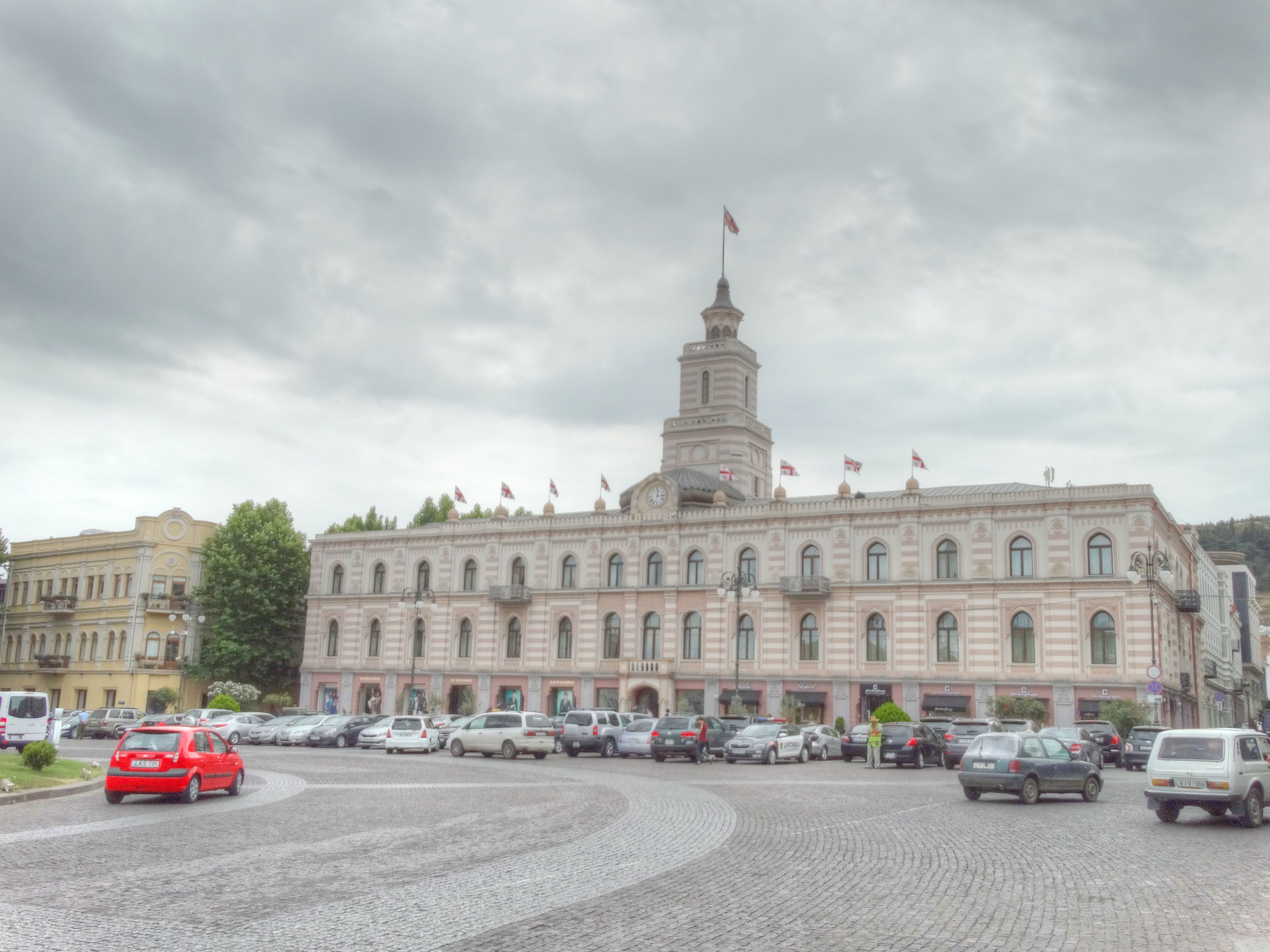
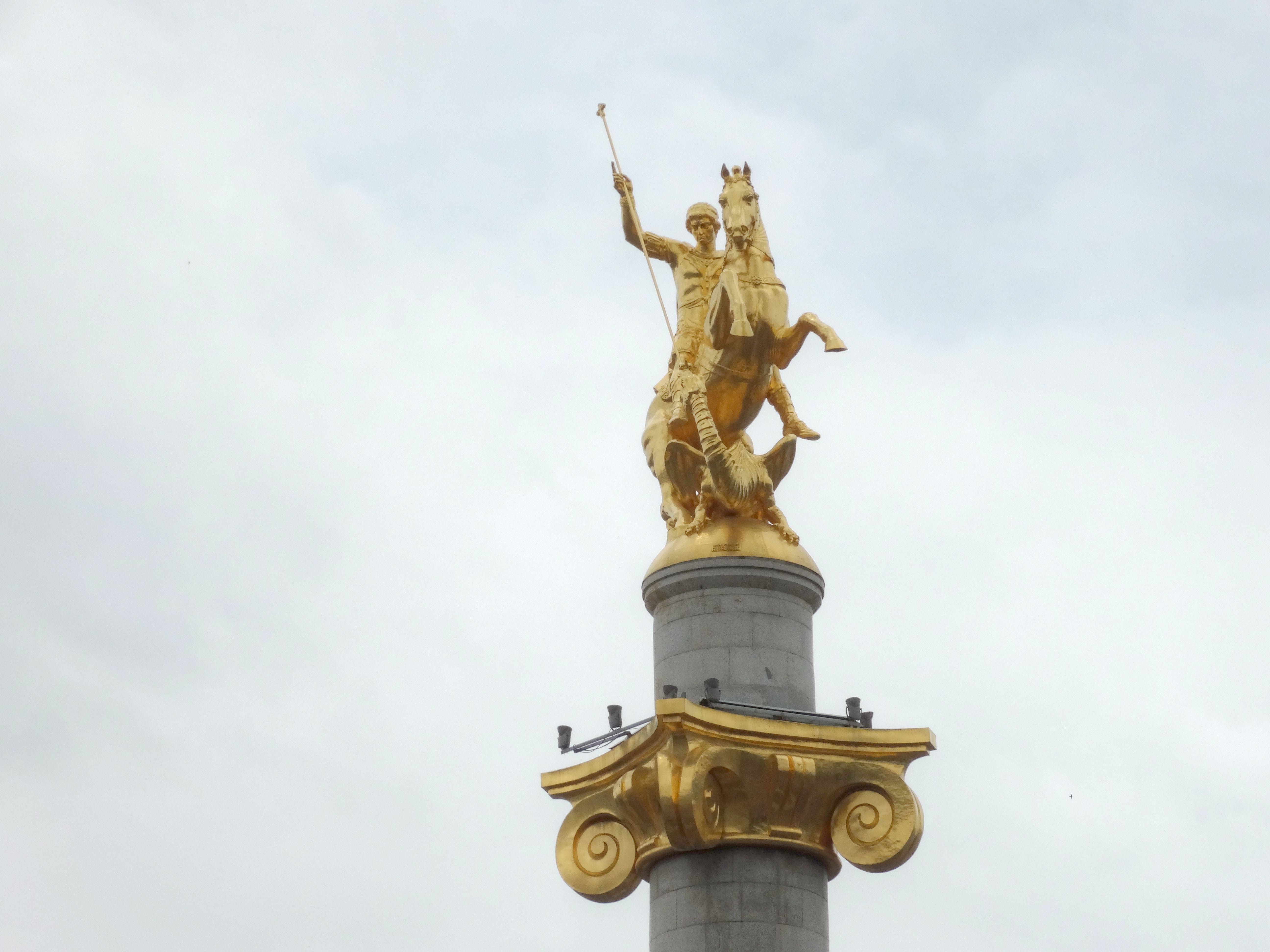
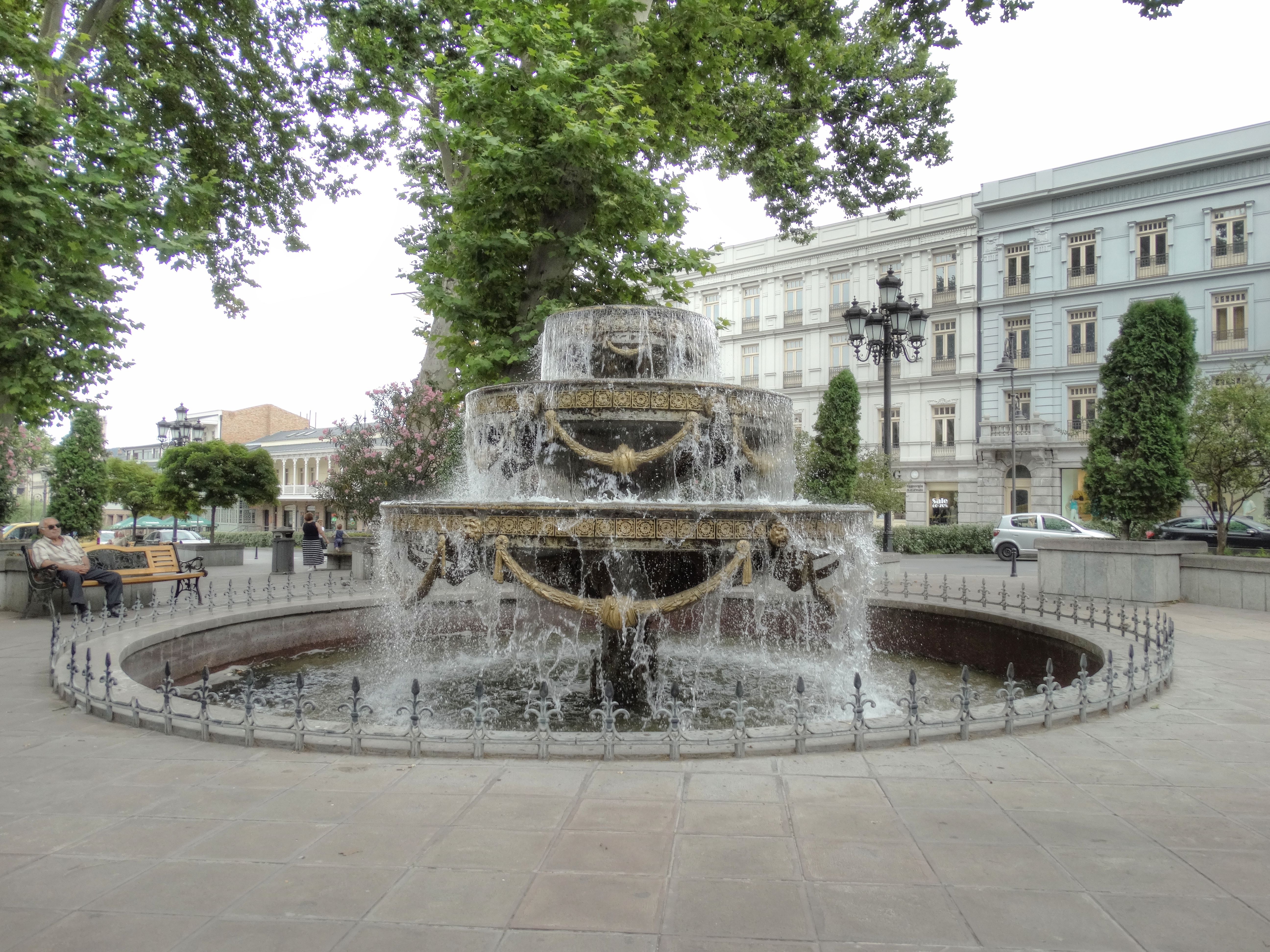
Going further north, at the western side, we'll see the building, where the Griboedov's Theatre is located. It's worth to stop some meters further - at the eastern side there's a National Museum of Georgia, and in the adjacent building - the Museum of Fine Arts. If we only decide to buy the tickets (extremely cheap, few lari only!), we can spend there few hours, discovering the cultural heritage of Georgia. A good idea would be also to lurk few meters into a side street (Anton Purtseladze Street) to visit Khachapuri House #1 and try some cheap and delicious khachapuri (a kind of Georgian bread with cheese, exists in many variations!), to get more power for further walk.
Going further north, at the western side of the alley, we see the old building of the Parliament of Georgia, built during the Soviet times:
Podążając dalej na północ, po zachodniej stronie dostrzeżemy budynek, w którym mieści się Teatr Gribojedowa. Kawałek dalej warto zatrzymać się na moment - po stronie wschodniej mieści się Gruzińskie Muzeum Narodowe i, w sąsiednim budynku - Muzeum Sztuk Pięknych. W obu, jeśli tylko zechcemy kupić bilety (jak na polskie realia, bardzo tanie - dosłownie kilka lari), spędzimy kilka godzin, zapoznając się z kulturalnym dziedzictwem Gruzji. Nie zaszkodzi też zajrzeć parę metrów w głąb bocznej uliczki (Antona Purceladzego) i odwiedzić Chaczapurnię #1. Tu będziemy mieli okazję skosztować naprawdę dobrego chaczapuri (placka z serem), by nabrać sił do dalszej wędrówki.
Podążając dalej na północ, po stronie zachodniej spostrzeżemy dawny budynek Parlamentu (wybudowany już za czasów radzieckich):
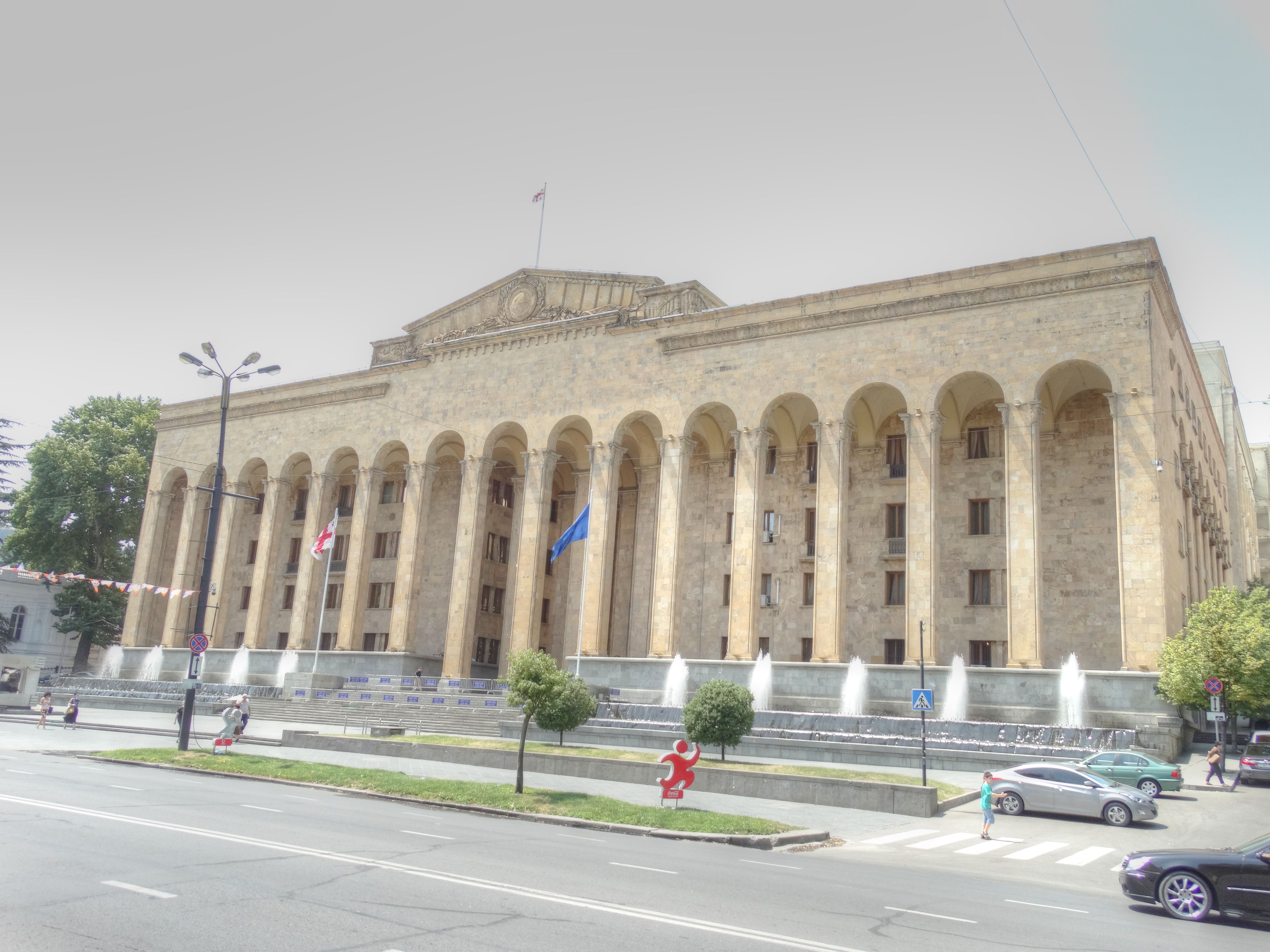
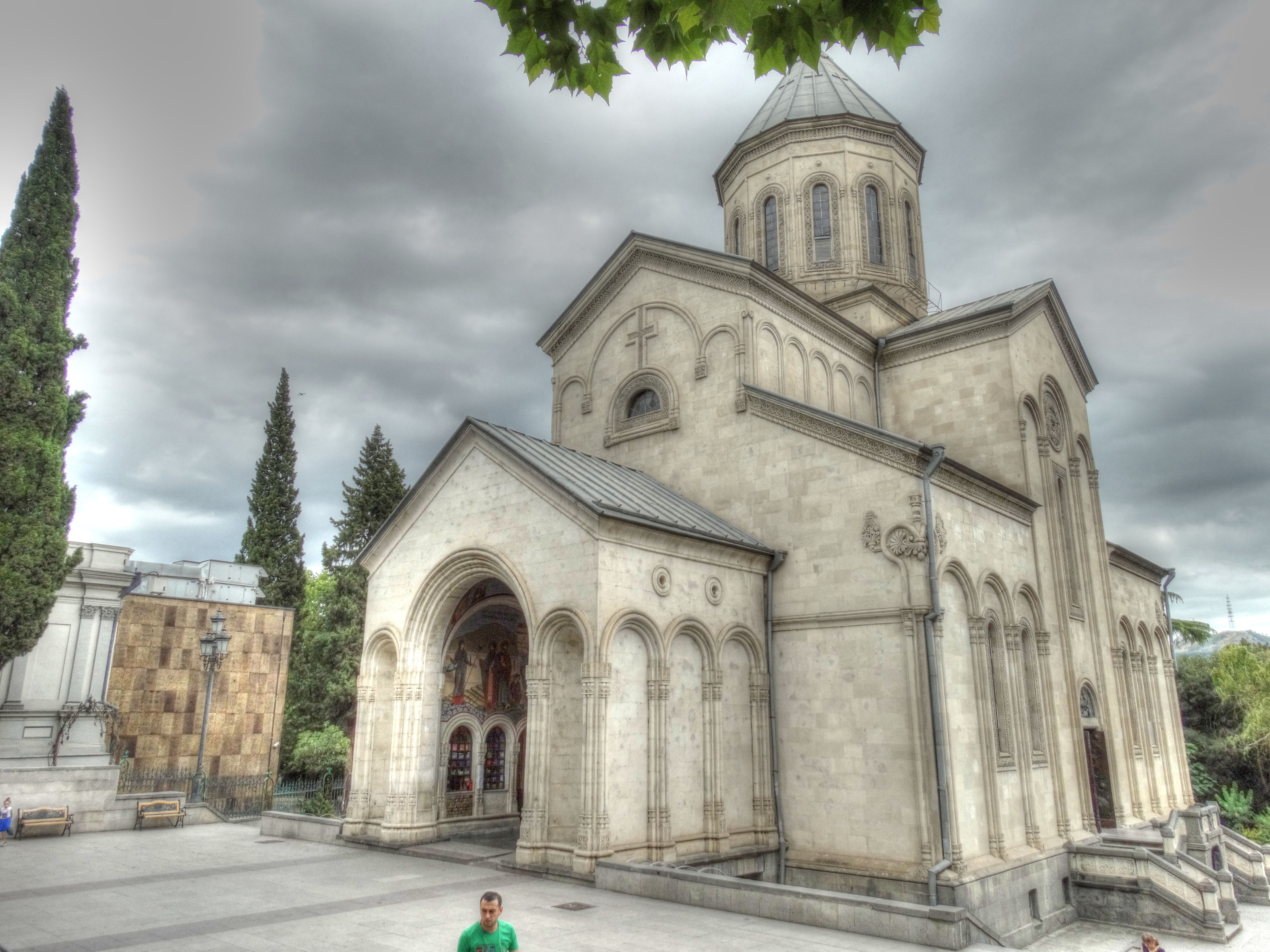


Near the church there's an art gallery (I recommend visiting it in search for some nice souvenirs - for example, a bookmark with Georgian alphabet letters is really a good idea), going further eastwards we would reach the 9th April Park (commemorating the people killed by the Soviets during a peaceful independence protests in Tbilisi from 1989).
The next interesting place of Rustaveli Avenue, is, located at the eastern side, at the 25 number, the building of Opera and Ballet Theatre of Tbilisi. The specific colours of the walls make confusing it with other buildings impossible.
Tuż obok kościoła znajduje się galeria sztuki (warto do niej zajrzeć w poszukiwaniu pamiątek - nieźle w tej roli sprawdzą się np. zakładki do książek z literami gruzińskiego alfabetu), za nią, po wschodniej stronie, rozciąga się Park 9 Kwietnia (nazwa ta upamiętnia ofiary pokojowej demonstracji niepodległościowej w Tbilisi z 1989 roku).
Kolejnym godnym uwagi miejscem w Alei Rustawelego będzie, znajdujący się po wschodniej stronie, pod numerem 25, budynek Opery i Baletu. Charakterystyczna elewacja sprawia, że rozpoznamy go bez najmniejszego problemu.
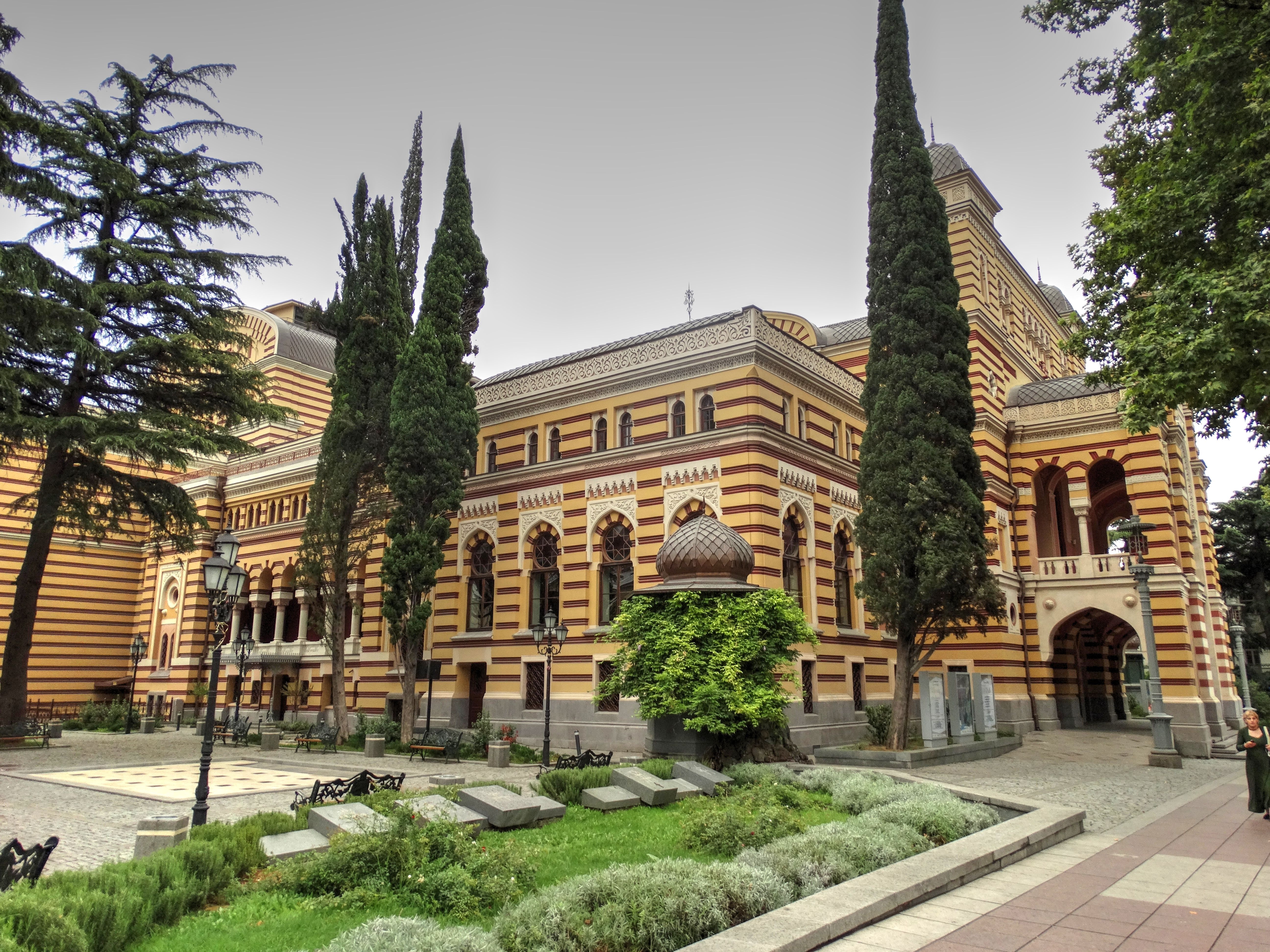

Some meters further north, the street takes a V-shape. Chosing the way right, we'll reach the Rose Revolution Square (Vardebis revolutsiis moedani), finding there a Great Bicycle, we could also see a West Bank part of Tbilisi view.
Kilkadziesiąt metrów dalej ulica się rozwidla. Jeśli wybierzemy odnogę wschodnią, dojdziemy do Placu Rewolucji Róż (Wardebis rewoluciis moedani) - znajdziemy tam Wielki Rower, będziemy mogli także podziwiać panoramę lewobrzeżnej części Tbilisi.

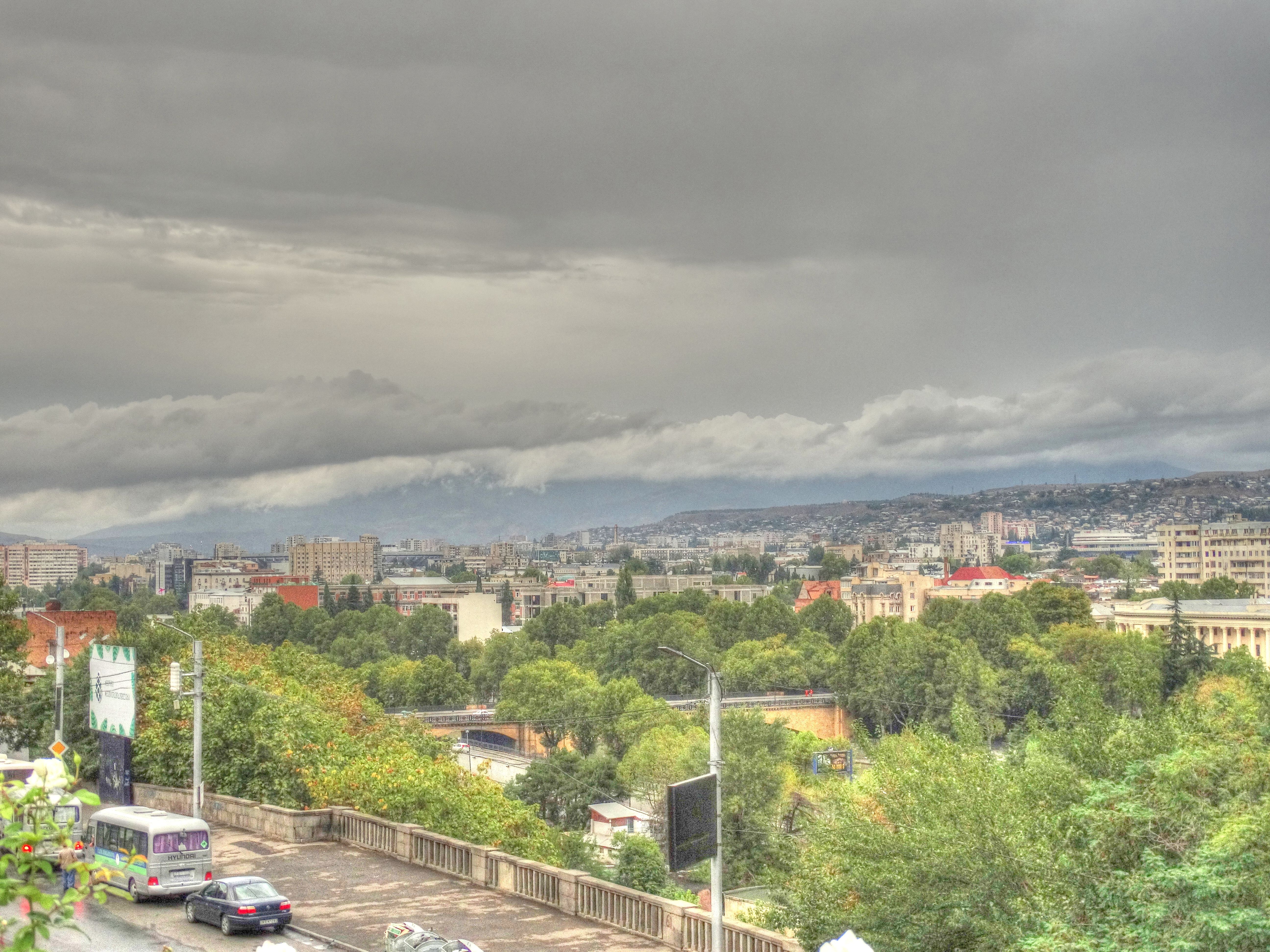

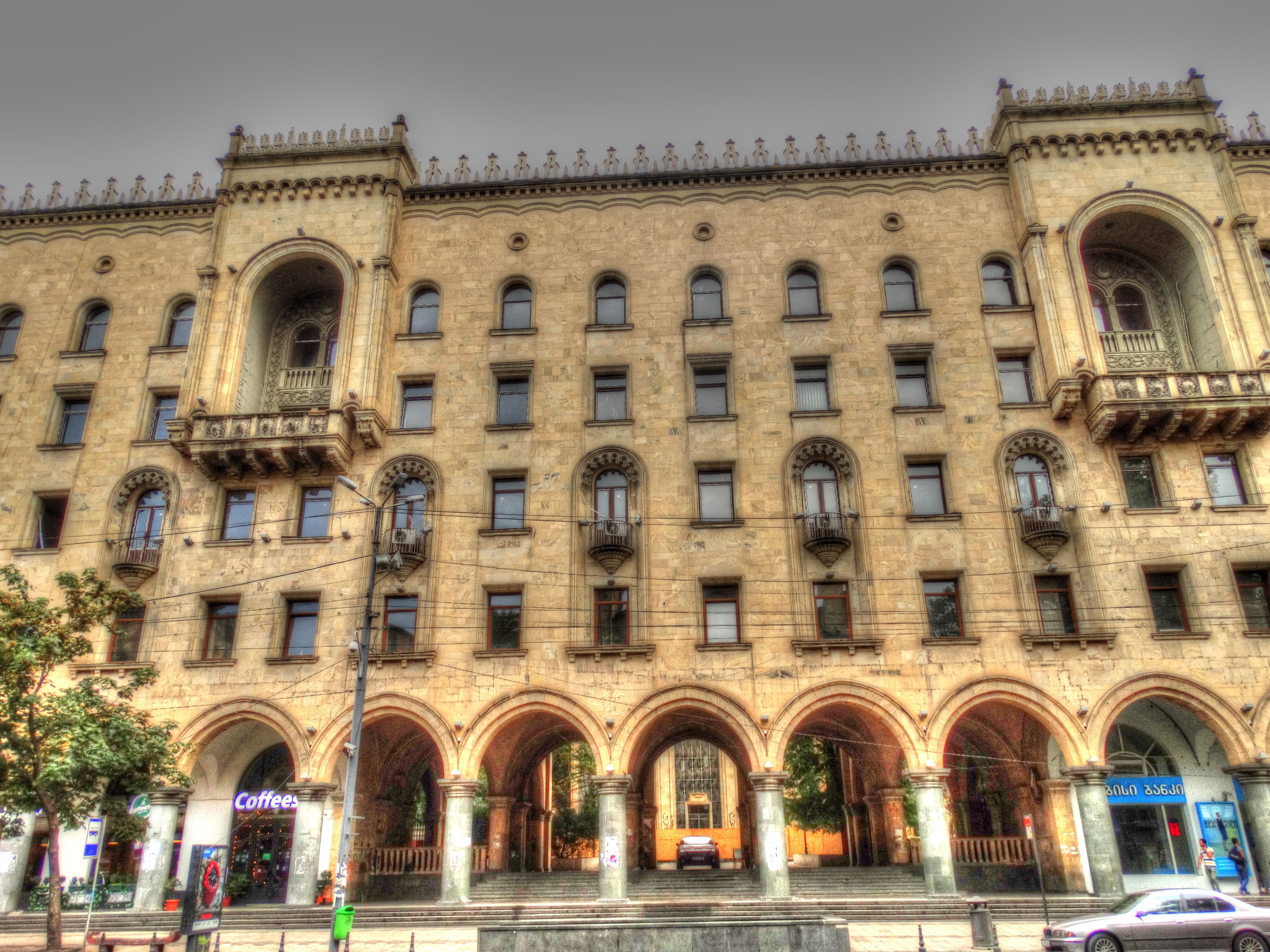

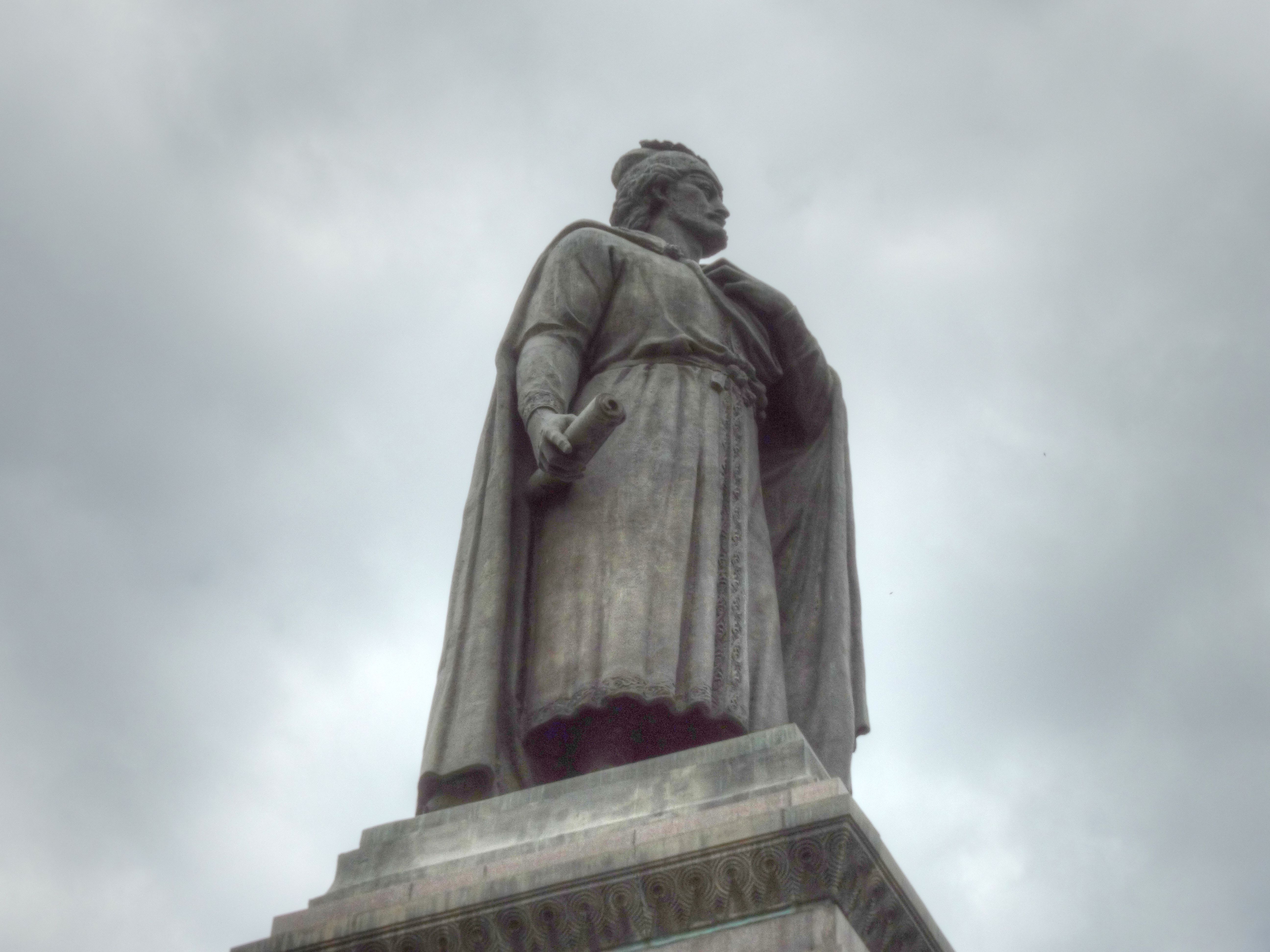

Nearby there's another unique place, being impossible to confuse with the others - the McDonald's. We'll probably say - what's unique in some McD? Well, it's a historical McD, the first one in Georgia, and the architecture of the building is rather original.
Tuż obok znajduje się też inne wyjątkowe miejsce, którego nie można pomylić - McDonald's. Powiecie - przecież one są wszędzie, co w nim wyjątkowego? Ano jest to McDonald's historyczny, pierwszy w Gruzji, w dodatku budynek, w którym się znajduje, cechuje oryginalna architektura.
